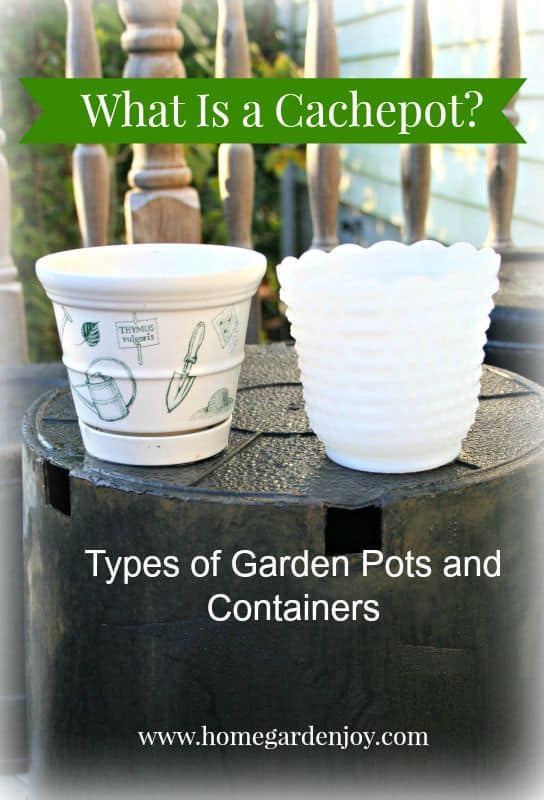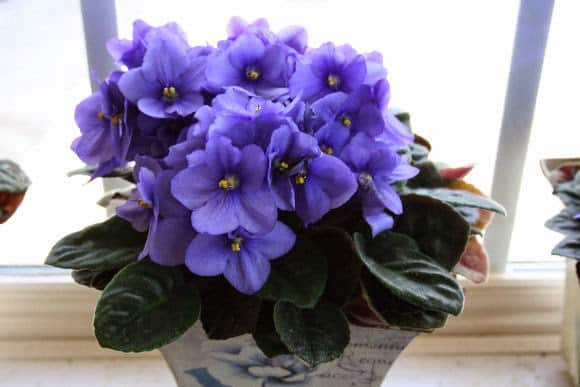Cachepots are decorative flower pots that are used to cover a plain or unsightly garden or flower pot. They can add color and beauty to flower pots, and be decorative accents in and of themselves.
Today in our continuing discussion of the types of garden pots and containers you’re likely to find at your favorite home and garden store, I’m answering the question, “What is a cachepot?”
Cachepots (pronounced: CASH-pohs) are decorative flower pots or containers. They can be made from any materials, but are likely to be made from glass, ceramic or metal.
The two in the photo above are in my personal collection. The one with green images screen printed on it is made of ceramic, and the white one is pressed hobnail glass. Below is a photo of an African violet in a metal cachepot decorated with screen printing. As you can see, cachepots can be quite beautiful!
How to Use a Cachepot
The trick to using cachepots is to use them as outer sleeves. Think of your cachepot like gift wrap; it’s meant to be decorative rather than functional.
Cachepots typically aren’t used as the primary plant container. That’s because most lack drainage holes. Without drainage holes, water can build up inside the soil and smother your plants. Even a little over watering can rot a plant if the water can’t drain away.
Cachepots also lack any kind of porosity, so air cannot move into the container. Clay or terra cotta pots have the greatest porosity, and allow air and moisture to move between the soil and air and vice versa. Plastic pots have large drainage holes in the bottom and near the sides at the base, which allows water to flow out or back in. Cachepots lack any kind of drainage.
A cachepot or decorative flower pot can be easily swapped if you move a plant from one room to another because your house plant isn’t planted right in the cachepot. The cachepot itself stays clean, and you just slip it off from around the plastic container and pot a new plastic container inside.
So that’s what the funny word, “cachepot” means. It’s a decorative flower pot or container. Choose what you love and display them proudly.
More articles in this series on garden pots and containers:







[…] and white petunias. Note that I’ve planted them in a plastic container which slips inside the decorative ceramic pot. This ensures that water drains out. During a heavy rainstorm, I can pull the pots out and let them […]